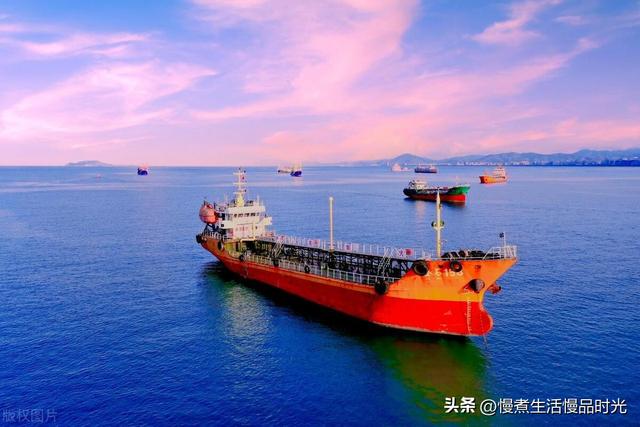SOLAS公约有关“消防安全要求”的历史演变(中英文/上篇)
英文:History of SOLAS fire protection requirements
 一、1914年和1929年《国际海上人命安全公约》
一、1914年和1929年《国际海上人命安全公约》国际航运的第一个消防安全(防火)要求是作为1914年《国际海上人命安全公约》(SOLAS公约)的一部分制定的,该公约是为应对1912年的泰坦尼克号沉没事件。尽管1914年《国际海上人命安全公约》因第一次世界大战而无法生效,但它确实包含基本的消防安全要求,这些要求后来被延续到1929年《国际海上人命安全公约》中。
英文:The first fire protection requirements for international shipping were developed as part of the 1914 SOLAS Convention, which was developed in response to the sinking of the Titanic in 1912. Although the 1914 SOLAS Convention was prevented from coming into force due to World War I, it did contain basic fire safety requirements which were later carried over to the 1929 SOLAS Convention.
二、1948年和1960年《国际海上人命安全公约》1929年《国际海上人命安全公约》通过后,人们从总体航运安全(包括消防)方面吸取了许多经验教训,从而促成了1948年《国际海上人命安全公约》的通过。1934年,莫罗城堡号客轮发生火灾,造成134人伤亡。对莫罗城堡号客轮火灾的调查以及从中吸取的教训,在不燃建筑法规的发展中发挥了重要作用,这些法规今天构成了客船消防安全法规的基础。此外,第二次世界大战期间海事技术取得了许多进步,随后被纳入1948年SOLAS公约。因此,1948年SOLAS公约第二章中增加了三个专门针对消防安全的新部分(D、E和F部分),这足以说明船舶上的消防安全越来越受到人们的重视。同时,1948年SOLAS公约被要求适用于客船和货船。
英文:After the adoption of the 1929 SOLAS Convention, many lessons were learned about the safety of shipping in general, including fire protection, which led to the adoption of the 1948 SOLAS Convention. In 1934, a fire aboard the passenger ship Morro Castle caused 134 casualties. The investigation of the Morro Castle fire, and the lessons learned from it, played a major part in the development of the non-combustible construction regulations which today form the basis of the fire safety regulations for passengers ships. In addition, many advances in maritime technology were made during World War II and subsequently incorporated into the 1948 SOLAS Convention. As a result, a greater emphasis was placed on fire safety aboard ships and this was demonstrated by the development of three new parts (parts D, E and F) being added to chapter II of the 1948 SOLAS Convention which were exclusively dedicated to fire safety. In addition, the SOLAS 1948 requirements applied to both passenger ships and cargo ships.
1948年SOLAS公约规定了客船的三种建造方法和货船的基本防火要求。1948年《国际海上人命安全公约》最终更新成为了1960年《国际海上人命安全公约》。1960年《国际海上人命安全公约》中与消防安全相关的最重要变化是对货船适用某些客船消防安全要求。
英文:The 1948 SOLAS Convention established three methods of construction for passenger ships and basic fire protection requirements for cargo ships. The 1948 SOLAS Convention was eventually updated with the 1960 SOLAS Convention. The most significant change incorporated into the 1960 SOLAS Convention, related to fire safety, was the application of certain passenger ship fire safety requirements to cargo ships.
 三、1974年SOLAS公约
三、1974年SOLAS公约虽然1914年、1929年、1948年和1960年SOLAS公约确实包含消防安全要求,但事实证明它们已经不能完全适用于客船。在1960年代,国际客船上的一系列火灾凸显了许多问题,因此,许多意见变化被纳入1974年SOLAS公约。在1974年SOLAS公约(于1980年生效,经修订后至今仍然有效)中,将消防要求设为单独的章节:1960年《国际海上人命安全公约》的第二章(建筑)分为两个新章节:第II-1章关于建筑——结构、分舱和稳定性、机械和电气要求,以及第II-2章关于建筑——防火、火灾探测和灭火。
英文:While the SOLAS conventions of 1914, 1929, 1948 and 1960 did contain fire safety requirements, they proved inadequate for passenger ships. In the 1960’s, a series of fires aboard international passengers ships highlighted many problems and, as a result, many changes were incorporated into the 1974 SOLAS Convention. In the 1974 Convention (which came into effect in 1980 and is still in force today, as amended) separated the fire requiements into a separate chapter: SOLAS chapter II (Construction) of the 1960 SOLAS Convention was divided into two new chapters: chapter II-1 on Construction - Structure, subdivision and stability, machinery and electrical requirements, and chapter II-2 on Construction - Fire protection, fire detection and fire extinction.
1974年SOLAS公约要求所有新客船采用不燃材料建造,并安装固定的消防喷水灭火系统或固定的火灾探测系统。对货船的要求也进行了更新,对特定类型的货船(如油轮)制定了特殊规定。
英文:The 1974 SOLAS required all new passenger ships to be built of non-combustible materials and to have either a fixed fire sprinkler system or fixed fire detection system installed. Requirements for cargo ships were also updated with special regulations for specific types of cargo ships such as tankers.
四、1981年修订版(1981 revision)1981年修正案于1984年9月1日生效,完全修订了SOLAS公约第II-2章。修正案包括第A.327(IX)号决议:关于货船消防安全要求的建议,纳入MSC.1(XLV)和第A.372(X)号决议:关于载运不超过36名乘客的客船消防安全要求的建议,纳入MSC.1(XLV),以上2项决议分别于1975年和1977年采用。同时,增加了“关于卤代烃灭火系统”的新法规和“关于惰性气体系统”的第62条新规定。
英文:The 1981 Amendments, which entered into force on 1 September 1984, completely revised SOLAS chapter II-2. The amendments included the requirements of resolutions A.327(IX) Recommendation concerning fire safety requirements for cargo ships(Incorporated in MSC.1(XLV)) and A.372(X) Recommendation concerning fire safety requirements for passenger ships carrying not more than 36 passengers(Incorporated in MSC.1(XLV)), adopted in 1975 and 1977 respectively, provisions for halogenated hydrocarbon fire extinguishing systems and a new regulation 62 on inert gas systems.
 五、1990年斯堪的纳维亚之星和1992年消防安全修正案
五、1990年斯堪的纳维亚之星和1992年消防安全修正案1990年,“斯堪的纳维亚之星号”客轮发生火灾,造成158人死亡。该事件引发了许多与消防和疏散有关的问题,这一事故暴露了当时船舶在火灾防护与人员疏散方面的重大缺陷,引发了国际社会对客船安全标准的深度反思。
英文:In 1990, a fire aboard the Scandinavian Star passenger ship left 158 persons dead. The incident raised a number of issues relating to fire protection and evacuation.
1992年12月,IMO(国际海事组织)通过了一套全面的消防安全修正案,适用于新客船和现有客船。修正案要求安装适用于任何现代酒店的最新消防安全功能,例如自动喷水灭火和烟雾探测系统,并将消防安全隔板升级为不燃材料,同时改进帮助人员逃生的方法,例如使用低位置照明。
英文:In December 1992, IMO adopted a comprehensive set of fire safety amendments, applicable to both new and existing passenger ships. The amendments required the installation of the latest fire safety features applicable to any modern hotel such as automatic sprinkler and smoke detection systems, and the upgrading of fire safety bulkheads to non-combustible materials and improved methods for assisting escaping persons, such as use of low location lighting.
同样在1992年,国际海事组织(IMO)消防分委会同意对SOLAS公约第II-2章进行全面修订。因为人们认为,多年来的各种修订使该章难以使用和实施。自1981年该章最后一次修订以来,技术进步和从事故中吸取的教训要求增加新的条款并对既有标准进行修改。最终,这项为期八年的努力成果不仅实现了最新修正案的“用户友好”合并,而且为SOLAS第II-2章提供了全新的章节框架,它将更好地帮助港口、船旗国以及船舶设计师处理未来可能遇到的消防安全问题。
英文:Also in 1992, the Sub-Committee on Fire Protection agreed to undertake a comprehensive revision of SOLAS chapter II-2 as it was felt that the adoption, over a number years, of various sets of amendments, made the chapter difficult to use and implement. Technological advancements and lessons learned from accidents, since the chapter’s last revision in 1981, required new provisions to be added and for existing requirements to be modified. However, the outcome of this eight year effort resulted in more than just a “user-friendly” amalgamation of the latest amendments, but an entirely new structure for SOLAS chapter II-2 which will better accommodate the way port and flag States and ship designers deal with fire safety issues in the future.
尤其是,现有章节中出现了许多模糊的短语,例如“令主管部门满意”或“应提供...手段”。事实上,整章使用了200多个这样的短语。此外,现有的章节结构不能支持和适应新颖的章节设计和功能,并且很少关注人为因素。鉴于80%的海上伤亡主要原因是人为因素,因此这个问题更应受到广泛关注。
英文:In particular, the existing chapter had many vague phrases such as “to the satisfaction of the Administration” or “a means shall be provided”. In fact, there were over 200 such phrases used throughout the chapter. In addition, the existing chapter had no support structure to accommodate novel designs and features and there was little focus on the human element, an issue which is now receiving a great deal of attention given that 80% maritime casualties are attributed to human factors.
六、1996年修正案和《国际防火测试程序应用规范》(FTP规范)1996 amendments and International Code for Application of Fire Test Procedures (FTP Code)
SOLAS公约第II-2章的1996年修正案,于1998年生效实施。该修正案包括了对总序、B部分(客船消防安全措施)、C部分(货船消防安全措施)和 D 部分(油轮消防安全措施)的修订。
英文:The 1996 amendments to SOLAS chapter II-2 - which entered into force in 1998 - included changes to the general introduction, Part B (fire safety measures for passenger ships), Part C (fire safety measures for cargo ships) and Part D (fire safety measures for tankers).
1998年7月1日,还制定了新的《国际防火测试程序应用规范》,并成为强制性标准。该规范为船旗国主管机关提供了统一的技术框架,用于审批拟安装在悬挂其国旗的船舶上的防火材料与设备。
英文:A new International Code for the Application of Fire Test Procedures was also developed and made mandatory on 1 July 1998. The Code is for use by Administrations when approving products for installation in ships flying their flag.
《国际防火测试程序应用规范》(FTP规范)为以下产品提供了实验室测试、型式认可和防火测试程序的国际要求:
The FTP Code provides international requirements for laboratory testing, type approval and fire test procedures for the:
non-combustibility test; 不燃性测试;
smoke and toxicity test; 烟雾和毒性测试;
test for ''A'', ''B'' and ''F'' divisions; ''A'', 'B'' 和 ''F'' 类划分的测试 ;
test for fire door control systems; 防火门控制系统测试;
test for surface flammability; 表面可燃性测试;
test for primary deck coverings; 主甲板覆盖物测试;
test for vertically supported textiles and films;垂直支撑的纺织品和薄膜测试;
test for upholstered furniture;软垫家具测试;
test for bedding components;床上用品测试。
 七、2000年修正案:修订后的第II-2章
七、2000年修正案:修订后的第II-2章2000年12月,国际海事组织通过了全面修订的SOLAS公约第II-2章,该章于2002年7月1日生效。
英文:In December 2000, IMO adopted a completely revised SOLAS chapter II-2, which entered into force on 1 July 2002.
新结构侧重于“火灾情景过程”,而不是像之前的SOLAS第II-2章那样关注船舶类型。因此,新规范从预防、检测和抑制火灾开始,一直到逃离火灾。此外,为了使修订后的SOLAS第II-2章更加易于使用,与技术要求相关的特定防火系统已移至新的《国际消防安全系统规范》中,并且每一条规范都有明确的目的和功能要求,以协助港口国和船旗国。
英文:The new structure focuses on the "fire scenario process" rather than on ship type, as the previous SOLAS chapter II-2 was structured. Thus, the regulations start with prevention, detection, and suppression following all the way through to escape. In addition, to make the revised SOLAS chapter II-2 more user-friendly, specific system-related technical requirements have been moved to the new International Fire Safety Systems Code and each regulation has a purpose statement and functional requirements to assist port and flag States.
修订后的SOLAS第II-2章新增了E部分,用于专门处理培训、演习和维护等人为因素问题;新增了F部分,规定了有关“批准替代(或新颖)设计和安排”的方法。
英文:The revised SOLAS chapter II-2 has a new part E that deals exclusively with human element matters such as training, drills and maintenance issues and a new part F that sets out a methodology for approving alternative (or novel) designs and arrangements.
